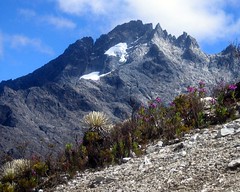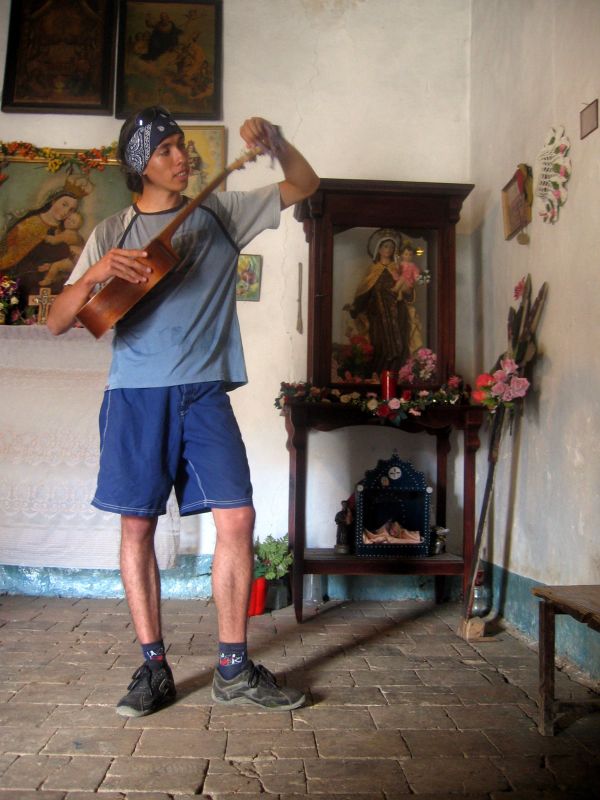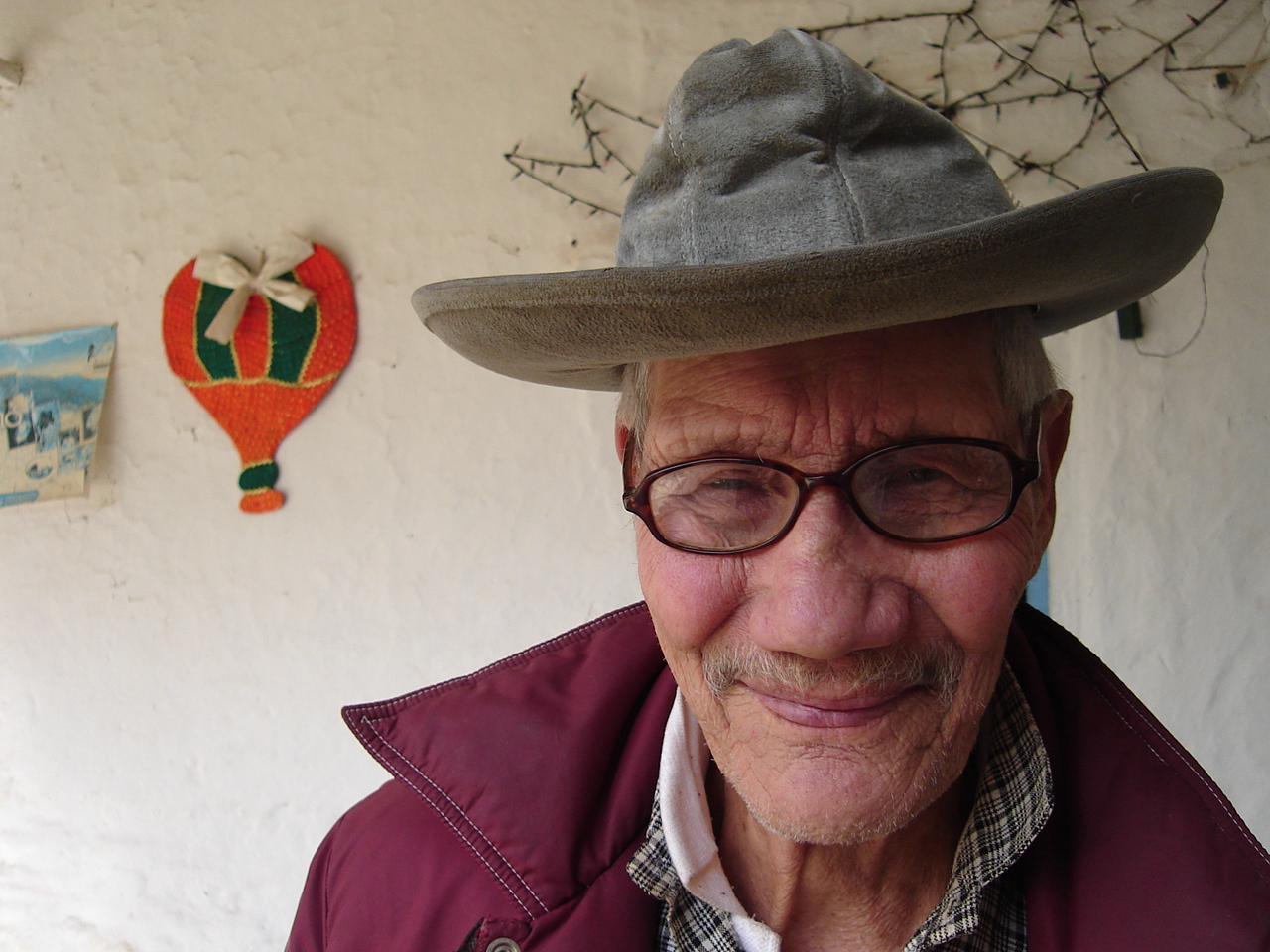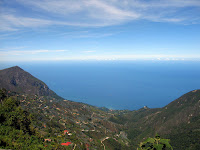Arriving in Caracas on Saturday November 26th, the first impressions were scenes at the airport and on the drive to the hotel. It was immediately clear that we were in a very modern city. The airport was enormous and the rows of planes reflected a high volume of flights. Leaving the airport, the roads appeared well maintained and the skyline was rich with tall office buildings and flashing neon lights.
Cash - Our first 24 hours in Caracas were spent in and around the hotel because of a total lack of access to cash. The Bolivar is fixed at 2150 per USD and trades in the black market at 2600 per USD. The government introduced rigged currency controls during the crisis of 2003. These controls help to keep the currency from weakening further and also made us completely unable t o obtain cash from ATMs, convert traveler’s checks into dollars, or even change US dollars into Bolivars.
o obtain cash from ATMs, convert traveler’s checks into dollars, or even change US dollars into Bolivars.
Our cash problems were alleviated on the first day of work when we each became Venezuelan millionaires. DHL provided us our three weeks of per diems in cash on our first day of work --- an amount exceeding 1.8 million Bolivars. The distribution took place in an interior office where one man sat in front of an enormous stack of bills worth over 12.5 million Bolivars.
Walking – Without any money for cabs we tried to do a walking tour our first day in Caracas. We quickly learned that the section of the city we were staying in was not designed for walking. In order to get back to the hotel the only route available meant crossing a major highway – which we did on foot. We were fortunate to get assistance from an ice cream man turned guide.
Gas – Our first day of work we were introduced to Caracas’ traffic issues. The government has chosen to subsidize cheap petrol at about $0.18 per gallon. As a result, everyone has a car… everyone. Traffic is terrible and constant. And, of course, the air quality suffers dramatically. Our headaches, itchy eyes, and a general tired feeling were blamed on the bad air.
Chavez – We were fortunate to witness a major election during our stay. The events around the election included the withdrawal of the opposition party, heavy Chavista propaganda, and the infiltration of our hotel by an EU contingent (overseeing the election). I took the opportunity to view a 2 hour Chavez speech the night prior to the vote and to discuss politics with anyone that was willing. I also read the two national papers to find out what the journalists had to say (both national papers are opposition papers). I spoke with taxi drivers, DHL managers, students, and others to find out how people felt about the government. I was not surprised to find many people in opposition. I was surprised to find opposition across class lines.
Beisbol – My first cursory introduction to the fanaticism of Venezuelan beisbo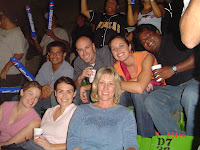 l fans occurred when I visited a sports bar to watch the Copa Sudamerica Final (Boca Juniors v. Pumas) with Navin. We were told the game could not be put on until after the baseball game (a midseason, meaningless game). Our real introduction was on a trip to the stadium during our second week to watch the Leones v Tiburones. In sharp contrast to experiences at MLB games, the stadium was exploding with energy. Despite attendance of only about 15,000, the noise level was deafening. Baseball games are a spectacle of dancing, screaming, and ch
l fans occurred when I visited a sports bar to watch the Copa Sudamerica Final (Boca Juniors v. Pumas) with Navin. We were told the game could not be put on until after the baseball game (a midseason, meaningless game). Our real introduction was on a trip to the stadium during our second week to watch the Leones v Tiburones. In sharp contrast to experiences at MLB games, the stadium was exploding with energy. Despite attendance of only about 15,000, the noise level was deafening. Baseball games are a spectacle of dancing, screaming, and ch eap beer. I believe the beer prices are set to encourage the throwing of beer – which occurs at frequent intervals and left us laughing and soaked.
eap beer. I believe the beer prices are set to encourage the throwing of beer – which occurs at frequent intervals and left us laughing and soaked.
In one of the middle innings we made a food run – the hotdog stand was a huge hit. The chef was an artist and the assortment of toppings were dulce. I remain a huge supporter of the smashed potato chip topping. After stuffing our faces and headed back to the beer shower.
Doormen and Taxis – We lived out of the Eurobuilding (pronounced Aerobuilding) Radisson during our consulting project. The hotel was comfortable and close to work. The doormen were a huge hit and did their best to get on our good sides. This included negotiating with taxis for us, recommending restaurants and bars, and even offering up prostitutes to the guys (we declined). Speaking of taxis, Caracas’ derth of cars has not resulted in a derth of cab drivers. In fact, we quickly learned to build a rolodex of cabbies direct numbers and make pickup arrangements far in advance. Our learning process was reinforced by hour long waits for cabs and 35 minute walks to the hotel.
Models, Weddings, TV and the Hotel Lobby – The hotel lobby was an absolute spectacle. At any time of day or night you never knew what you were going to find. Typically, it would be anything from a world class model preparing for a quick TV clip with an older latin man in a sti ff black leather coat and an oversized microphone or a dance troop of 16 year old high school girls in tight uniforms. Another big hit were the steady flow of wedding parties on the weekends. Lavish affairs, the weddings were characterized by guest arrivals that resembled prom. We found it particularly amusing when it was difficult to tell mothers from daughters (it often was).
ff black leather coat and an oversized microphone or a dance troop of 16 year old high school girls in tight uniforms. Another big hit were the steady flow of wedding parties on the weekends. Lavish affairs, the weddings were characterized by guest arrivals that resembled prom. We found it particularly amusing when it was difficult to tell mothers from daughters (it often was).
Necklines, Mid-drifts, and Silicon – It took some adjusting to and a few days to find the right places but Venezuela definitely has a supply of beautiful women. The beauty crosses age, class, and ethnicity although not gender lines (according to our female compatriots). And Venezuelan women flaunt it whether they have it or not. Oh… and this is a breast culture if there is such a thing. There is an epidemic of fake breasts. The surgeries are done inexpensively and it is not unusual to see them prominently displayed on single women, young mothers, or mature married women. The coverage of real or fake breasts is tight and limited. The pants and skirts are chosen for similar attributes. It was a pleasure and a curse.
Xmas in Caracas – We had the great fortune of being invited to the DHL Venezuela Christmas party on December 10th. The party started at DHL offices at 10:30am whe re we piled into shuttle buses that took us to the party. The bus trip included lots of ribbing, classic marangue, plenty of reggaeton, impromptu dancing and singing by Jose Gregario (interior manager for Maracaibo), and plenty of laughs. The party was held at a country house on a hill an hour and a half from Caracas. It was a rainy day but that didn’t dampen the spirit of the crowd. Caja de Tejas was set up with a dominos room, a big white tent for the traditional Christmas meal, a stage for the bands, a dance floor, and plenty of bars. Despite our office location (in the basement of the building) it quickly became clear that EVERYONE was aware of our presence. Being the center of attention has its privileges. There was no shortage of dance partners or people to talk to.
re we piled into shuttle buses that took us to the party. The bus trip included lots of ribbing, classic marangue, plenty of reggaeton, impromptu dancing and singing by Jose Gregario (interior manager for Maracaibo), and plenty of laughs. The party was held at a country house on a hill an hour and a half from Caracas. It was a rainy day but that didn’t dampen the spirit of the crowd. Caja de Tejas was set up with a dominos room, a big white tent for the traditional Christmas meal, a stage for the bands, a dance floor, and plenty of bars. Despite our office location (in the basement of the building) it quickly became clear that EVERYONE was aware of our presence. Being the center of attention has its privileges. There was no shortage of dance partners or people to talk to.
 The party was amazing. Complete with four live bands, a comedian, a booty shaking contest, performers on stilts, and whiskey of course. We met so many people it is hard to remember them all. But there were some personalities that stood out. Jose Gregario (mentioned above) had an endless supply of energy. ‘The Rock,’ a Matt Dillon clone that is ‘easy on the eyes,’ had the mental aptitude of… well a rock. Sabrina, one of the DHL socialites, took booty shaking to a new level (think exorcist). And Valmore, of course, who served a stellar role as our host. Others included – the drunk guys on the bus, Roman, Yoli, Alexandra, Strategic Parts, the Customer Service crew, Valentina, etc.
The party was amazing. Complete with four live bands, a comedian, a booty shaking contest, performers on stilts, and whiskey of course. We met so many people it is hard to remember them all. But there were some personalities that stood out. Jose Gregario (mentioned above) had an endless supply of energy. ‘The Rock,’ a Matt Dillon clone that is ‘easy on the eyes,’ had the mental aptitude of… well a rock. Sabrina, one of the DHL socialites, took booty shaking to a new level (think exorcist). And Valmore, of course, who served a stellar role as our host. Others included – the drunk guys on the bus, Roman, Yoli, Alexandra, Strategic Parts, the Customer Service crew, Valentina, etc.
The rumba lasted all day. But with mild pre-sleep hangovers, the gringos admitted defeat and dragged ourselves back to the hotel at midnight. Of course, the DHLers continued the party til 6am at local bars and clubs.
Shopping Malls – In Caracas, shopping is only a by product of the mall experience. The real experience is seeing and being seen just like the rest of the city. San Ignacio is the epicenter of Caraqueno nightlife (as far as we know). An open air mall with dozens of cafes, bars, and lounges - there are also full scale clubs. And a spectacle of revealing clothes. We approached the mall with skepticism and left amused and entertained.
Travel Agents and Tourism – Travel agents in Caracas are on par with other customer service establishments in Latin America. They leave the customer with a sense of confidence that arrangements are being made but in reality only react to constant badgering. With heavy demand for all forms of transportation during the holidays, our travel was consi stently a challenge. The first planned trip to Los Roques was scratched for an impromptu visit to a local beach.
stently a challenge. The first planned trip to Los Roques was scratched for an impromptu visit to a local beach.
A more surprising lesson learned very early again involved money. Tourist destinations in Venezuela are expensive. For example, 2 nights in basic accommodations at Los Roques runs in the $450-550 range and 2 night trips to Angel Falls in Southeastern Venezuela run $750-$1000. These were not in my price range and did not fit with my previous experiences in other Latin American countries.
Public Transportation – On my weekend alone in Caracas (after the departure of Navin, Alexis and Annie, and while Vik, Michelle and Sienna were in Los Roques), I sampled public transportation. Surprisingly, there is a very clean and efficient Metro system that crosses Caracas. Rides are a bargain at about $0.15 each way as compared to typical cab fares of $3-$5. In contrast to warnings I heard from friends, I felt very comfortable in the Metro.
I also took a few rides on the local buses. These charge twice as much as the Metro but are still a very reasonable $0.30 each way. The buses were a bit more interesting in terms of diversity of riders and there was a lot more staring at the odd ball gringo. The dramatic concerns for our safety seemed to be unfounded during my local travels.
Theater – I also took advantage of my weekend in Caracas to get a real Caraqueno cultural experience at the theater. Of course, I had no idea what play I would be seeing. I was pleasantly surprised to be able to understand most of what was being said from the start of the work. More surprising yet was the final portion of the first act, all of the actors on stage stripped naked and one couple began sequencing a nude love scene on a bed. It turns out, this was a play about the differences between men and women with a ton of nudity to help demonstrate the normalcy of sexual relations and the human body. It was a comedy and it was funny. The actors were not difficult to look at either.
Restaurants – Dining in Caracas was a mixed bag of excellent, mediocre, and not so good restaurants. The quality level was closely aligned to the price. With our $40 per diem we were able to sample some of the finer restaurants and without exception the food was excellent. We were also treated to a handful of dinners by our fine hosts at DHL. The mid price restaurants were a definite gamble. Some were passable, some left parts of the group clenching their stomachs the next day.
Hospitality – Venezuelan people were the happiest, friendliest, most energetic, positive people I have interacted with in my travels. They have an amazing zest for life. Our hosts at DHL made us feel right at home and part of the DHL family --- which we found out is truly a family with plenty of fishing off the company pier. We were able to quickly make friends with people we worked with and other people we met during our various outings. I will always remember the warmth of the people in this country.
 I came to
I came to 